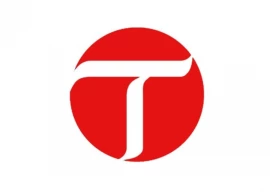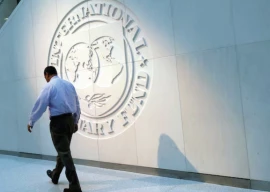
Though considered a theoretical impossibility in 1965, when the term “stagflation” was first used by a British politician, it assumed a vastly different meaning in the very next decade.
Up to the 60s, countries were relatively standalone entities, but the 1970s showed that it was possible for the combination of low growth (unemployment) and high inflation to exist simultaneously.
The current economic growth rate of almost zero per cent in Pakistan, accompanied by unprecedented inflation of around 30%, with rising unemployment, presents a classic picture of stagflation.
Economic literature on the topic suggests that stagflation is always very difficult to manage and requires long-term, thoughtful, and difficult, political-cum-macroeconomic decisions.
The federal and provincial governments will be presenting the annual budget for 2023-24 in the next two weeks. It will be almost the sixth consecutive “crises” budget in succession. The lack of long-term focus and reluctance to address the structural problems, which marked the last five budgets, is likely to mar this budget also.
The 2018 budget of Shahid Khaqan Abbasi government had numerous tax cuts and optimistic spending targets, which were typical of an election year budget where the incumbent government was not expected to retain its reins over power.
Though the new government in 2018 passed two supplementary budgets approved in late 2018 and early 2019, but both focused on taking back some of the tax rate concessions but largely the effort was on cutting down the huge current account deficit.
After change of guards at the finance ministry and FBR in May 2019, we witnessed a huge amnesty scheme followed by our entry into the IMF programme starting July 2019. The 2019 budget, therefore, was a hurriedly put together document to fulfil the requirements of the international regulators.
The negotiated settlement required a heavy “front-loading” of the reform agenda, which meant that the taxation target required an increase of 42%, which was not only unprecedented but was hugely unrealistic.
The programme required everything all at once. As a result, it was an amalgam of a trillion rupees of new taxes, increase in policy rate by SBP, huge devaluation of PKR, cutting down of SOE losses, privatisation and hike in power/gas tariffs.
This type of speedy adjustment generally triggers a whirlpool of economic recession if not accompanied by an aggressive tackling of the structural malaise in the economy and governance. As fate would have it, only after nine months, bulk of the difficult conditions of the programme, got held in abeyance, due to the Covid-19 pandemic.
The next two budgets announced in 2020 and 2021 were characterised by bold overtones of crisis management and public appeasement measures.
These budgets also offered a lavish amnesty scheme for real estate and construction sector, while the expenditure budget had an additional allocation for vaccines and mitigation of the economic shock brought by Covid in its wake.
TERF, subsidy in business utility bills, and lowering of policy rate, were all part of the same debt financed expansionary policy regime, which invariably leads to increase in debt and inflation without addressing the core structural problems.
The 2022 political power shakeup meant that the last announced budget had a mix of IMF compliance, crisis management and election planning built into it.
And yet again, we missed out on the much-needed meaningful positive actions and structural reforms, which were required to address the real problems, emanating from years and years of large fiscal deficits, wasteful public spending, lack of meaningful investment in productive sectors, hugely negative trade balance and burgeoning debt problems.
This year also, unfortunately, the political economy, fiscal space and external factors do not appear to be favourable for any meaningful actions required for initiation of correction and revival path.
The federal government already appears to be in a severe fiscal crunch due to almost stagnant growth and super high inflation. Moreover, the impending elections will force the government to go for a much larger fiscal outlay with a high tax collection target without any significant tax measures.
The dilemma is that the stagflation looming large, cannot be controlled without major transformational changes in public spending, tax administration, money supply, growth policies, and positive expectations of economic stability, which are nowhere on the horizon.
The correction path will need to include (i) Real time data integration of transactions for expansion of tax base (ii) goods flow monitoring in supply chains for documentation (iii) taxation of real estate holding and gains, (iv) sharp cut down on expenses (eg we still are spending millions of forex on commercial, trade, information and numerous other attaches in other countries in addition to the core diplomatic staff), (v) stoppage of further public grants to PIA, Steel Mills and hundreds of other failed experiments, (vi) addressing the power sector losses and (vii) transforming tax collecting apparatus in federation and provinces into a business-friendly single interface.
In the current restricted fiscal space, the government also needs to focus on tariff reforms for duty-free import of industrial raw material and capital machinery, which might not involve a tax loss of more than Rs10 billion but will kick-start huge industrial activity in the country.
Another costless intervention is to remove all ex-ante business-related approvals and move them to ex-post inspections/ audits. Price regulations in pharmaceuticals have already pushed many MNCs out of Pakistan and the sector needs immediate deregulation.
DRAP unnecessarily insists on local certification on surgical instrument manufacturers, who already export to the EU and the US with international certification.
This and many other similar governance-related constraints can be removed by the government in almost costless manner.
Similarly, public spending on provision of industrial land on lease model, and partial funding of international certifications can go a long way in making Pakistan an industrialised and high-value goods exporting country. Assisting the startups in the IT sector to get reasonable prices of their services is another area which needs prioritisation.
Pakistan cannot actually lose any more time in avoiding the correction path. If the current economic growth of 7.5% of India and 5.5% of Bangladesh, as compared with 0.3% of Pakistan, is not able to shake us into corrective actions, then what will?
We have lost precious time – six previous years – by refusing and avoiding the badly needed surgical intervention that our economy requires. Time is to rise up to the occasion.
The writer is a tax and industrial policy practitioner and career civil servant
Published in The Express Tribune, June 5th, 2023.
Like Business on Facebook, follow @TribuneBiz on Twitter to stay informed and join in the conversation.



















COMMENTS
Comments are moderated and generally will be posted if they are on-topic and not abusive.
For more information, please see our Comments FAQ